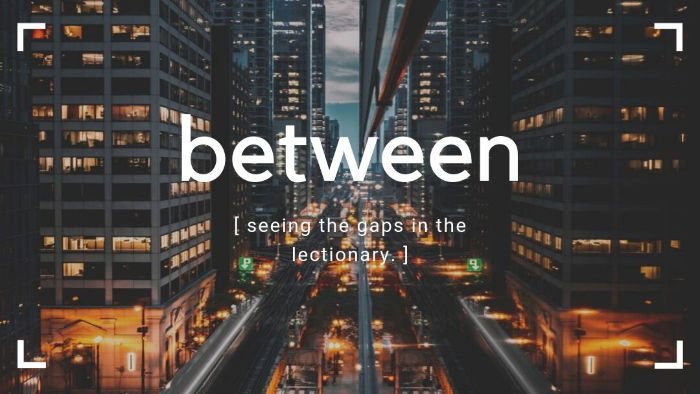
A look at the gaps in the lectionary.
This week: the gap between Easter 3 + 4 (Year A)
The text: from Luke 24:13-35 to John 10:1-10
This is an odd departure for the lectionary. To take us from resurrection stories of Jesus appearing to his disciples to a moment before the Passion.
This is particularly odd when given the context of what Jesus is doing and experiencing at this earlier point in the gospel of John.
Let’s take a look back…
There is a transition at the end of John 6. Jesus calls the bluff of those following him. He seems to be willing to lose half of his followers to figure out who really wants to follow him. He makes them decide: are you following me because you want what I want? To do what I do? To create the world I’m called to create?
Or
Are you following me because of miracles? Because you want to be on the “winning team”? Or you think there’s something in this for you?
And when he does this, two things happen.
- Half his followers leave.
- The Temple leaders decide to kill him.
From that point on, the gospel grows really tense and Jesus spends a lot of time dealing with the leaders. They confront him and challenge him. And he challenges them.
Perhaps the most famous challenge happens at the beginning of chapter 8, when Jesus famously saves a woman from being stoned to death.
Preparing his disciples
There is also a theme of preparation happening in John at this point. He’s naming what he is to do. He foretells his death. And he speaks to what it really means to be a disciple.
Then he tussles with the leaders over healing a man born blind. We covered this not so long ago (Lent 4).
The last words in the gospel of John before our next reading involve Jesus talking to a man to whom he has given sight. A man who was harassed by the leaders, thrown under the proverbial bus by his parents, and shunned from the community.
Jesus comes to that man and asks if he believes. And he does. And then Jesus speaks of his purpose: giving sight to the blind and blinding the sighted.
Hearing in blindness
This is the material Jesus enters into with his talk about sheep, the shepherd, and the gate. That he is there to give sight to the blind and to remove sight from those who aren’t using it. Hearing the voice becomes a valuable concept when they can’t see!
This really is a strange story to read in the Easter season because of this context. Because this isn’t the obvious material of the resurrection. And, in fact, is the material that leads to the Passion!
However, it does offer a useful opportunity to see life in the midst of confusion (and doubt). How to move forward when we are blind to what is happening. That it isn’t just about doing right or being right. But that we are able to know the waybecause we are able to hear Jesus. Even if we can’t see him.
Honestly, given the last three weeks of people not even being able to see Jesus when he’s right in front of them, that seems natural.
